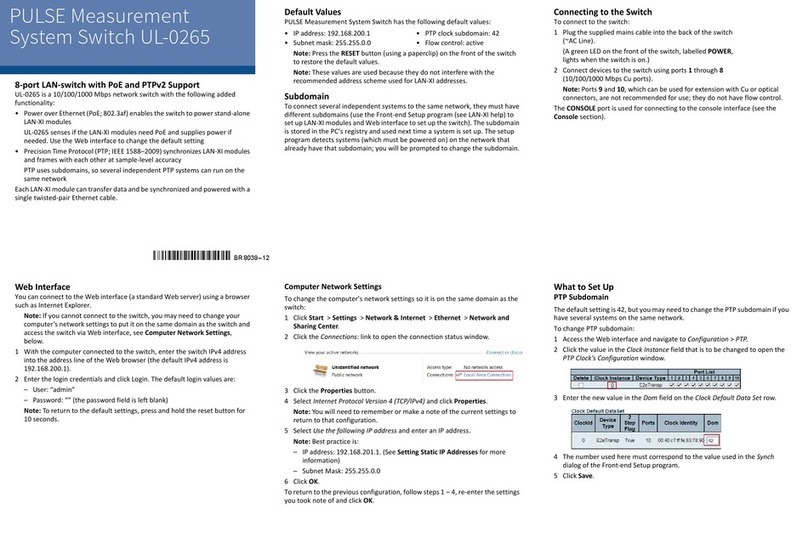
Chapter 1 —Introduction
Introduction
Sound Quality Head and Torso Simulator Type 4100, 4100 D
User Manual
Brüel & Kjær
2
1.1 Introduction
Sound Quality Head and Torso Simulators Types 4100 and 4100 D are manikins for
sound quality testing. Type 4100 includes Falcon RangePreamplifiers Type 2669 L
with charge injection calibration facility, while Type 4100 D includes DeltaTron
Preamplifiers Type 2671. Both types use high sensitivity, low noise, ½″Falcon Micro-
phones. Throughout this manual, we refer to both types as Type 4100 or “the simula-
tor”, except where the difference is specifically indicated.
Two microphones, positioned at the entrances to the manikin’s ear canals, simulate
the human ear separation and ensure a signal that includes the interference patterns
caused by the head and upper body. This gives an extremely accurate three-dimen-
sional, binaural recording.
Two moulded-silicone pinna simulators sit around the microphones to provide direc-
tivity patterns similar to the human ear.
The simulator has a sound-dampening fabric cover which slips easily over the mani-
kin’s neck. This assists in changing the reflections and diffraction from the body and
shoulders to obtain the correct directivity.
The position of the head can be adjusted by turning the neck ring so that the head
looks straight forward or slightly down at an angle of 17°.
1.2 Sound Quality
The sound quality of the noise from a product, as perceived by a person, is an
increasingly important factor when assessing the total quality of the product. Objec-
tive measuring methods have shown themselves to be inadequate at identifying the
differences which can be experienced by listening.
This applies to all forms of transport as well as household and office machinery
products: all are increasingly subject to the optimization of their sound quality. Sub-
suppliers of products and components to these industries are often required to in-
clude an acceptable sound quality as a part of the product specifications.
1.3 Subjective Listening Tests
The final evaluation of the sound quality of a product is normally made using a
selected group of people –a jury in a listening test.
To have the jury listen to the sound in reality, for example each jury member driving
a car and then reporting on the sound quality, is both time consuming and costly. To
overcome this, the simulator can be used to make a high-quality binaural recording
of the product’s noise on a DAT recorder. This can then be simultaneously presented
to all members of the jury off-site.
be139113.book Page 2 Friday, September 14, 2001 1:50 PM




























